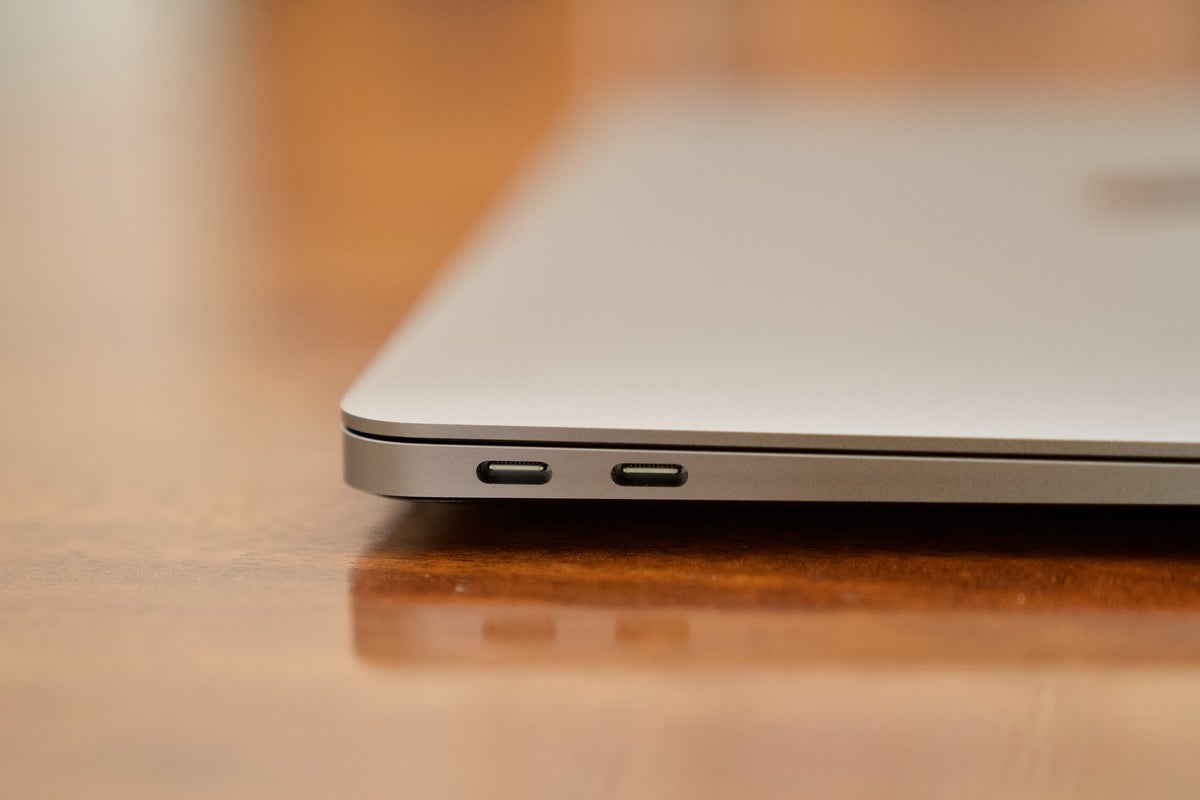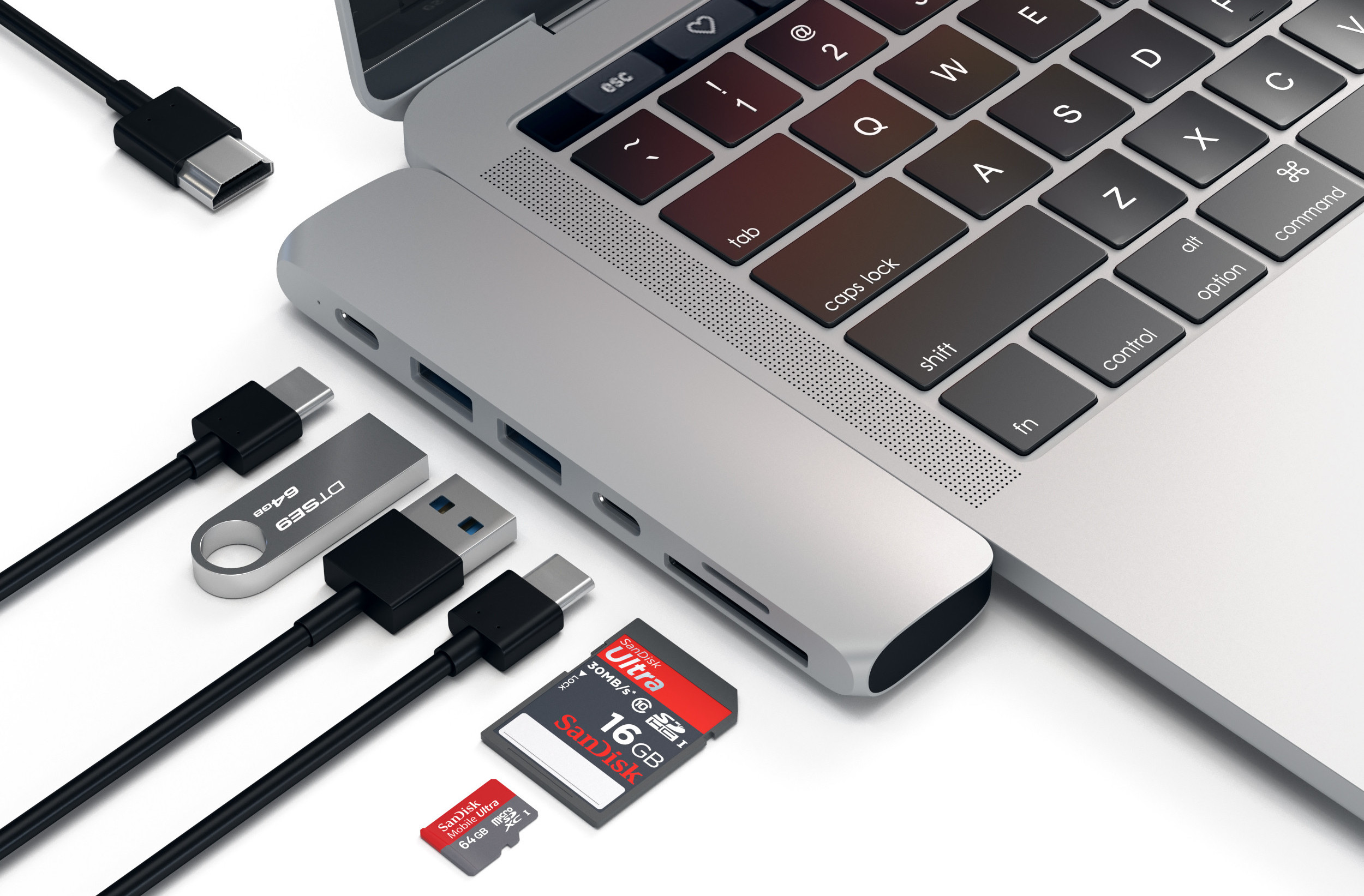

Overall, the Stone Pro has worked and continues to work very well and it looks on the desk as far as I’m concerned. Otherwise, I’ll daisy chain to the USB-A hub in my monitor which isn’t the best scenario, but it’s yet to cause a problem. The Stone Pro can handle them all if I opt to connect a single monitor and move the Webcam and Lightning cable to USB-C connections. Usually about 6 USB devices connected Keyboard, Microphone, Webcam, Speakers, Stream Deck and a Lightning cable. If you run your computer to the left of your monitor, and you only have left-side ports, you may need to purchase a longer TB4 cable as a result of the placement on the dock. When I need additional display real estate I can raise my monitor higher and open the display on my laptop beneath. The only concession I’ve had to make is to run the front TB4 cable around the right side of the dock, around the back and to the left side of my laptop so it doesn’t interfere with where the front edge of my laptop rests on the desk. Most days I place my laptop on the angled surface with the lid closed like this. The vertical stand provides a solution in this scenario but I found the fit of the dock into the stand to be loose and when the dock is turned vertically the cables just looked messy.Īfter trying a few different setups, I landed on keeping the dock flat and centered under my monitor. It also can mess with the stability as heavy cables can start to lift the front of the dock from your desk. The image on the front of the box shows as much. It’s not just rearward either as the connection to your laptop is out the front. One, depending on your cables and how big the connector housings are, the footprint of the dock grows a bit. When you’ve got the dock all set up with cables attached you’ll notice a couple things. It’s ended up being a good thing for me, but caused some nagging issues when bouncing between that and my personal 2017 Intel based MacBook Pro which does support dual external monitors. I jumped on the 2020 M1 MacBook as my work computer before realizing it only natively supported one external monitor. Given that your computer is now connected to your displays through a new device you may need to take a minute and change any display settings and or extended desktop layouts. Press the button to power on the dock and you should be up and running. Lastly, connect your computer via a Thunderbolt 4 cable to the port on the front of the Stone Pro Dock. Now you can connect an ethernet cable for wired data, and any USB-A devices you have to the remaining ports. You’ll plug those into any of the three Thunderbolt ports on the back of the dock. It’s worth noting that all monitor connections on the dock are Thunderbolt, so you’ll have to get some new cables (Thunderbolt to DisplayPort, or Thunderbolt to HDMI) or Thunderbolt adapters to work with the cables you have. We’ll tackle and external monitor (or two) next. Next connect the power adapter to the dock and the appropriate wall plug cable to the power adapter before connecting to wall power. Figure out if you want the Stone Pro flat or vertical (with the stand) and then if all your cables will reach your devices. Getting connected is pretty straight forward.

If you don’t have a ton of desktop real estate, they’ve also included a vertical stand to minimize the footprint. Who said expansion docks needed to be ugly or boxy? Brydge certainly doesn’t think so. Power: 135w power supply | 90w power pass through to charge connected computerĭimensions: 198 x 75 x 131mm | 338g Design and features

Surface Pro: Surface Pro 7 – Single display via USB-C | Surface Pro 8 – Dual displays via USB4ĭisplay Support: Via Thunderbolt 4 – Single 8K/30 Hz or Dual 4K/60 Hz MacOS: 11.0 or greater | 2020 MacBook Air and M1 MacBook Pro limited to single display 1 x Power Adapter + US and International Type I cables.

All of this in a sloped design that can double as a laptop riser. The Brydge Stone Pro TB4 dual display dock is a multiport dock that can charge your laptop (up to 90w) while adding support for dual monitors, extra USB-A and C ports along with an SD card reader and ethernet port.


 0 kommentar(er)
0 kommentar(er)
